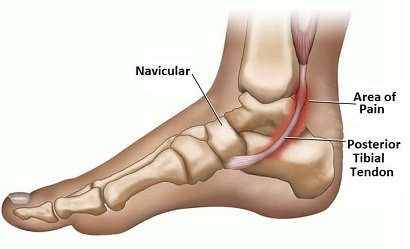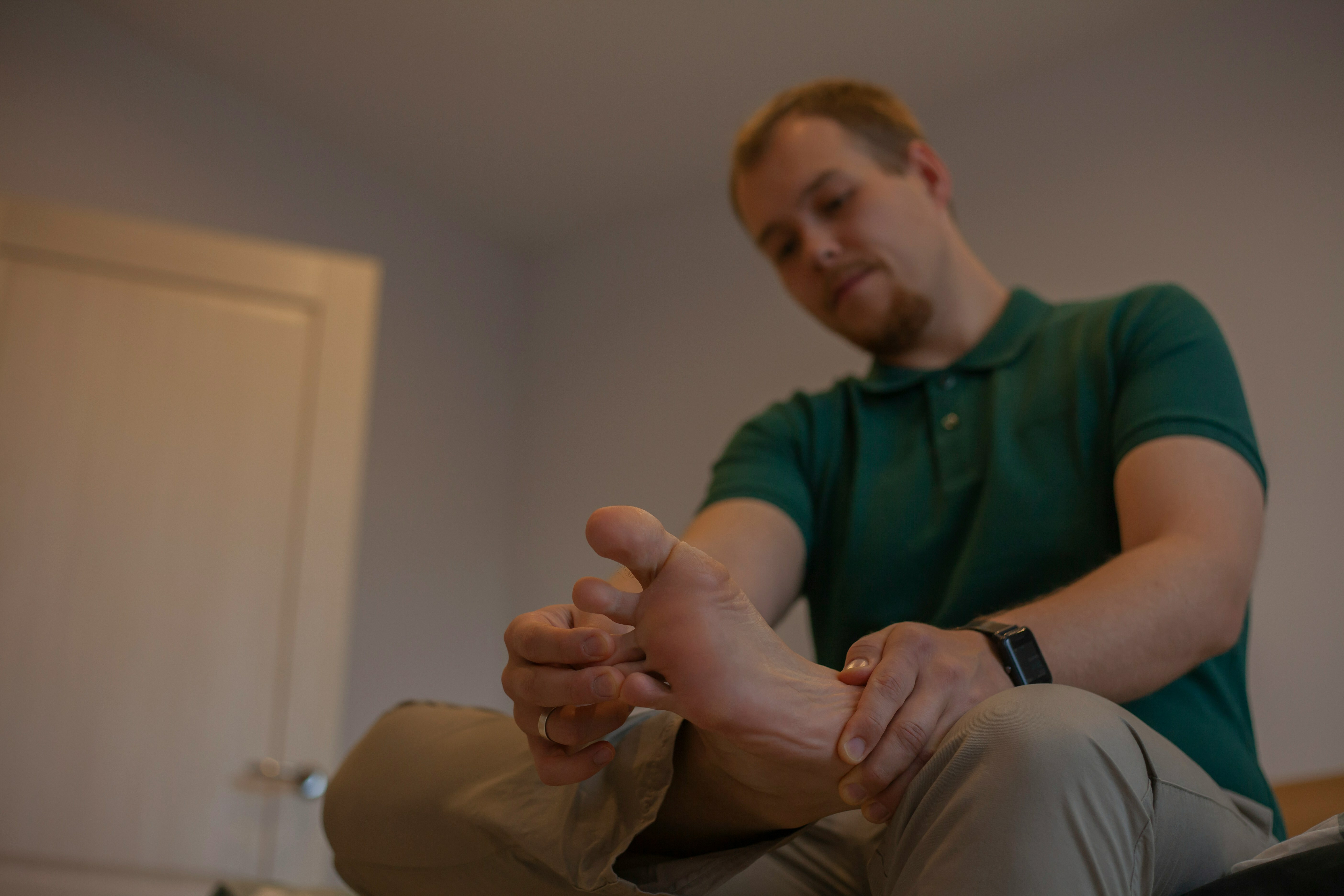Plantar Fasciitis and Posterior tibial tendentious present with similar pain and symptoms but they are in two different places, we’ve all been guilty of self-diagnoses and working out some self-help treatments but could you be treating the wrong problem?
Plantar Fascia is an extension of the achilles tendon which is responsible for extension of the foot while putting load through the achilles tendon. Also it controls the stability while standing, walking and running. Even though the diagnosis is given that there is inflammation of the plantar fascia (anything with ITIS on the end of it usually means there is inflammation) there is no inflammation of the tissues because the usual treatments for inflammation are not recommended in this case. The pain presented with Plantar Fasciitis can be tender along the bottom of the foot and around the heel.

The Posterior tibialis attaches at the back of the calf to the foot and the tendon supports the arch as well as the inside of the ankle. It is responsible for plantarflexion and inverting the foot. Posterior tibial tendentious is a condition caused by changes in the tendon, impairing its ability to support the arch. The pain which Posterior tibial tendentious is associated with can be felt around the side of the ankle and foot, also on the inside and up at the side of the calf.

There can be common causes that can result in having either of these issues that is posture and stability of the hips, core and spine, which affects when you stand, walk or run. These are some examples that cause these issues: such as footwear, that is usually the most common place to start looking at the cause of the problem. Some shoes have raised heels and raised toes pulling the small muscle (Abductor hallucis) in the foot that is constantly held in tight position which pinches arteries, limiting the supply of blood to the tissues to the bottom of the foot.
Although you may have the perfect foot wear are you supporting the arches of the foot? Which can cause issues. Anatomically having weak core muscles or inadequate strength tilts the pelvis forward, causing tension in the hamstrings which transfers into the calf pulling the achilles tendon up making the Plantar Fasciitis at the bottom of the foot tight. Also repetitive movements especially on hard surfaces without sufficient recovery time to let the muscle, tissue, tendons recover and adapt. Getting treatment for the symptoms rather than the cause.
Some signs and symptoms to be aware of and along with the areas of pain already mentioned.
· Overpronation issues usually make Plantar Fasciitis worse.
· Posterior tibial tendentious can get worse with the longer you are on your feet and the opposite is said for PF and can be very painful first thing in the morning.
· Conditions such as diabetes, hypertension, obesity, previous surgery, foot/ankle trauma and steroid use is found in up to 60% of patients with Posterior tibial tendentious.
· Standing on your toes may be painful and difficult, as too when you walk up or down stairs or on uneven surfaces.
· A change in the arch or gait (foot placement) of the foot.
Usually if you get on top of these issues straight away it can reduce recovery time. I have known these issues to go on for months with people dealing with the pain hoping the problem will just solve itself but the thing is in both cases the tendons will start to deteriorate and not be as strong as they once were causing further issues.

Here are list of some treatments that will help you:
· Go and see a sports massage therapist, they will take a look at your posture which is maybe the cause. Also perform some soft tissue work and a good therapist will give you some exercises to help with your rehab.
· Reducing the intensity, frequency or speed of your activity that you find makes it worse. Especially if you find it has got worse the following day rather than during or after activity. Usually for PF the very first step of the day.
· A heel wedge in your shoes can usually help ease the pain of PF and arch supports with PTT.
· Complete rest from intensive exercise or spending a long length of time on your feet.
· Heel raise exercise – from the ground double footed then on to single leg, then perform on a step.
· To keep your feet healthy and strong get a small towel laid out flat and gather it in towards your feet by using your toes to gather it in.
· Lift your big toe without lifting your toes, then lift your toes without lifting your big toe repeat on each foot.
